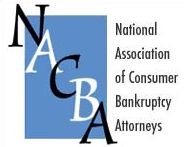Rebuilding Credit After a Chapter 13 Bankruptcy
Also commonly referred to as a “Wage Earner’s Plan,” Chapter 13 is a specific type of bankruptcy filing that is designed for those with a regular source of income. It’s a chance to come up with a long-term plan to repay all – or even some – of the debts they have incurred over time.
When a person files for Chapter 13 bankruptcy, those who they owe debts to will propose a plan that allows them to make installment payments. Typically these plans last between three to five years.
Of course, Chapter 13 is still bankruptcy – meaning that the filing can stay on your credit report for up to a decade depending on the situation. You will also have to give up all of your credit cards and if you don’t already have a mortgage, it will be incredibly difficult (if not outright impossible) to get one.
Having said all of that, it’s critical to understand that all hope is not lost. Rebuilding your credit after filing for Chapter 13 bankruptcy is absolutely possible – it simply requires you to keep a few key things in mind along the way.
Rebuilding Your Credit, One Step at a Time
By far, the most important thing that you can do to rebuild your credit after filing for Chapter 13 bankruptcy involves coming up with a sound financial strategy – one that will help you avoid the types of mistakes that led you to this position in the first place.
At a bare minimum, you need to sit down and come up with a realistic budget each month that you can stick to. Make a list of your mandatory expenses so you know how much you’ll need to make to get by. Add to that your debt payments to creditors, along with any existing loans that you may have.
It is imperative at this point that you keep up with all of your payments. Rebuilding your credit isn’t going to happen overnight, but as the old saying goes, “slow and steady wins the race.” You need to be consistent over the long haul for the best results.
Another way to start rebuilding your credit after Chapter 13 bankruptcy involves getting a cosigner on any loans that you take out moving forward. If you were to try to take out a personal home improvement loan from your bank after bankruptcy, for example, it would be very unlikely to be successful. Having someone with solid credit cosign allows you to get the loan and making regular, on-time payments allows you to rebuild your credit. The same concept is true if someone makes you an authorized user on one of their credit card accounts.
Finally, you’ll want to try to keep all balances on credit accounts as low as possible moving forward. There will soon come a day when you’re able to apply for and get credit cards again. As you do, try to keep balances to about 30% or less of your total credit limit. Doing so is an indicator to creditors that you’re prepared to repay what you borrow, which ultimately helps rebuild your credit score in the future.
The Clark & Washington, LLC Approach
In the end, Chapter 13 bankruptcy doesn’t have to be the end of something. Instead, you should look at it for what it really is – an opportunity for a fresh start. Once you’ve come through this process and are successfully on the other side, you’ll be able to begin the process of rebuilding your credit and restoring your financial health before you know it.
At Clark & Washington, LLC, we’re proud of the reputation we’ve been able to earn as one of the leading (not to mention the largest) bankruptcy filers operating anywhere in Georgia today. Since 1983, bankruptcy is all we do – allowing us to be as efficient and as reliable as possible when it comes to protecting your rights, helping you understand your options and making sure this process goes as smoothly as humanly possible.
If you’d like to find out more information about the steps you can take to rebuild your credit after filing for Chapter 13 bankruptcy, or if you’d just like to begin the process as soon as possible, please don’t hesitate to contact the team at Clark & Washington, LLC today.



